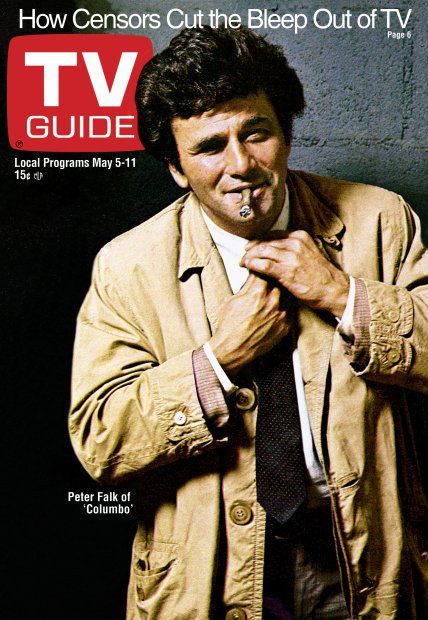Homo sapiens is a weird species. Granted, it's the only species of which we have a few thousand years of recorded history, written by, for, and about homo sapiens. The amazing thing is how little we learn about ourselves from that. And yet it's all there: humans repeat themselves, cross-culturally, cross-chronologically, in certain patterns of behavior that must be rooted in the animal we are. Just as sheep flock together, lie down and get up, chew the cud, and wander around at very specific times, so humans do certain things certain ways, no matter when/where. Here are a few that I've noted (and yes, there are exceptions to all of these):
(1) Hierarchical societies (oligarchies, monarchies, etc.) are the norm. Democracies are rare. We are still living in an on-going experiment. Best wishes, and lots of luck.
(2) Military cultures emerge regularly, whether (a) to an internal threat (from incompetence to criminal behavior to lack of heirs to natural disasters or anything else that can be blamed on the dynasty) as a way of distracting everyone from the truth or (b) to a genuine external threat (rarer than you might think) or (c) a surplus population of young unmarried men who are highly unlikely to ever get a wife (generally because of polygyny and/or female infanticide). Oh, and they've also been generated and used against their own large slave population, as in Sparta and the Antebellum South. Always remember Chris Hedges' "War Is A Force that Gives Us Meaning".
NOTE: Throughout history, every time someone invents a new weapon, someone throws a war to try it out. Long bows and the Hundred Years' War! Gunpowder and Renaissance Italy! Tanks, submarines, airplanes, chemical weapons, and machine guns and WWI! The "military-industrial complex" was around long before Eisenhower's day.
NOTE 2: Interesting patterns of military cultures:
a. Military cultures have what they consider a formal code of conduct, however, this is often disorganized, and often unwritten. It is also violated regularly.
b. Military cultures are generally extremely machismo; and also historically very homosexual. From Sparta, Roman legions, Samurai Japan, Ottoman Empire Janissaries, the Knights Templar, Frederick the Great and his Prussian war machine, and on down the historical line, many military cultures have assumed that soldiers fought better and braver when they were on the battlefield with their lover(s).
d. Military cultures usually educate their elite females (including physical/military training) more than in concurrent non-military cultures, primarily because someone has to keep things running while the men are off fighting.
e. Military cultures have had little respect for civilians, especially peasants/farmers. In ancient and medieval times, the military elite often had the right to kill peasants at will.
SUBNOTE: A common motif in comic literature is the griping of retired military about how lazy, entitled, incompetent, disrespectful and generally poor civilian society is compared to the military. Examples are Foggy in Last in the Summer Wine and Major Benjy in the Mapp & Lucia novels of E. F. Benson.
f. Military cultures generally begin as military innovators, but become hidebound by traditional modes of war, often avoiding even technological advances. In the long run, this often proves to be their downfall. A number of British & French generals in WWI were still fighting with cavalry tactics against machine guns. In the same way,
g. Military cultures also often begin as societal innovators (especially when it comes to integration of former foes, slaves, inferiors, others), but eventually become extremely conservative, worshipping the past (especially dead leaders and heroes), fearing change in cultural and intellectual matters. There's a reason Sparta banned all philosophy (which included science back in ancient times), as well as "modern" art.
(3) When societies perceive themselves to be in crisis, the first thing they generally do is look for a strong leader to tell them what to do; and that strong leader (from Pericles to Augustus Caesar to Napoleon to Stalin and on and on and on) often urges that (a) something needs to be conquered and (b) a number of people need to be purged from society and (c) women have to have more babies. Specifically, more of the right kind of babies.
(4) Almost all humans have addictive personalities, and all societies DO have addictive personalities. That's why they use up resources at a higher-than-replaceable rate and expect more to be always available, either by buying them or going to war to take them from someone else. This doesn't work forever: As Jared Diamond once said, what was in the mind of the Rapa Nui who cut down the last tree on Easter Island?
(5) Technology scares people, at least at first. Then, as it gains acceptance, it makes people believe that they have control over their environment (from weather to their own bodies), thus increasing the desire (see addiction above) for more technology, no matter what the cost. What's interesting is that after a while, people develop both increased expectations of technology (to the point that some people today take it for granted that Covid vaccines were developed in record time), and a contempt for technology (hello, anti-vaxxers who tell us all about it via cell phone).
(6) As hierarchical cultures grow in size, most resources end up going to the least productive people (i.e., the farmers, teachers, artisans, etc. get screwed, while the real money goes to politicians, athletes, the ruling class, criminals, etc.).
(7) Most societies see "traditional values" as whatever it is that they have been practicing for the last couple of generations.
Example: A person online said that his understanding of traditional values were "the importance of nuclear family, the primacy of parental decision-making re:child well-being (versus the state), the value of marriage and unease with divorce, concern over hypersexuality and pornography, etc."
Meanwhile, the truth is the nuclear family isn't traditional, it's modern, and really begins around the late 1940s with the post WW2 housing / suburban boom. The "traditional" family has always been a multi-generational tribe that lives together, either in one or multiple dwellings in a farm, or (in the city) certain buildings within a certain area, more or less communally. The traditional marriage used to be, of course, polygyny (for those who could afford it). Divorce was perfectly traditional according to the Bible and everyone else, as long as the man instigated it. Parental decision making was the norm - including the parental decision to kill a baby that was unacceptably weak, deformed, disabled or female. And concern over hypersexuality, pornography, etc. (which have always been around), has always been honored more in the breach than the observance (men's parties frequently had musicians, dancers, and acrobats who were suggestive onstage and available off).
(8) Speaking of which, all societies are obsessed with sexuality and reproduction. But what's considered "decent" or "moral" is various. Polygyny, polyandry, monogamy, swapping partners, homosexuality, bisexuality, sharing partners, birth control, infanticide, divorce, adoption at all ages, etc., have been around from the beginning of recorded history.
NOTE: In-law jokes are as old as time.
(9) There has never been a society without (a) a belief system in something greater than themselves; (b) a cheap addictive drug available to the masses; and (c) art (visual, kinetic, musical). There have been many attempts to wipe out any and/or all of these - John Calvin's Geneva, the French Revolution, the Puritans in America, Prohibition, Stalinism, Khmer Rouge, Mao's Cultural Revolution, the Nazis, etc. - but the attempt has always, always, always failed. We're gonna believe, we're gonna get high, and we're gonna paint, draw, write about it all.
(10) Humans have always liked pets.
BSP: My story "Collateral Damage" is in Murderous Ink Press' Crimeucopia: We're All Animals Under the Skin.
Linda Thompson is stunned when someone transforms her joke about a drive-by shooting at an AA meeting into reality. Drugs and exes, bikers and beatings, neighbors and old memories all put Linda on a twisted search that may solve the mystery, or get her killed.
Available at
Amazon.






































